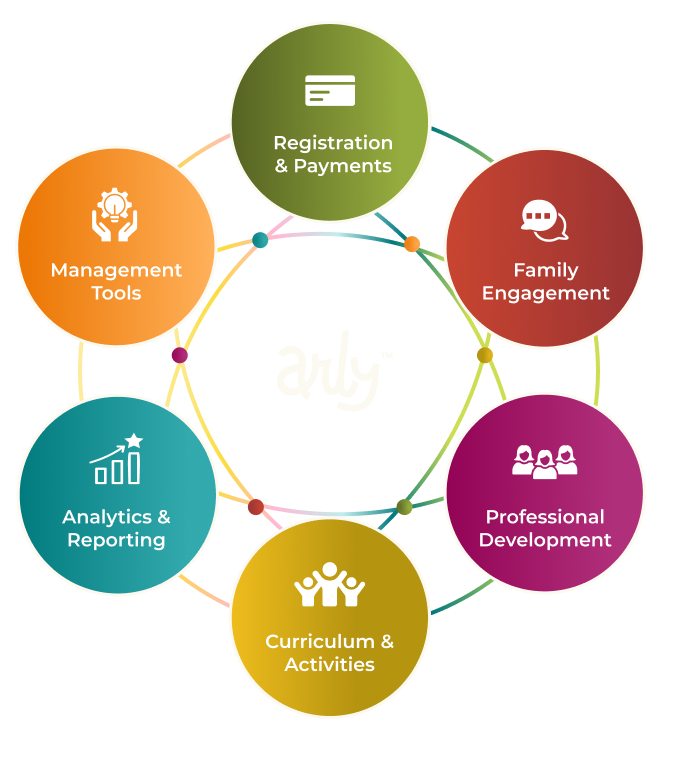Quick Guide: 7 Tips and Tricks for Starting an Afterschool Program
By Arly Communications on September 1, 2022
Why are afterschool programs important? The answers are innumerable. Some of the most important benefits are that these programs provide a safe and nurturing environment for kids while their parents are still at work, they can help kids advance their education with homework assistance and learning recovery, and they can enrich lives with extracurricular opportunities.
If you see a need in your community and are interested in starting an afterschool program, follow these tips to set your program up for success.
Identify and fill an existing need.
Begin with the big picture. Learn about the needs in your community and ensure your vision for your afterschool program will help fill an existing gap. Nearly 25 million children in the U.S. would like to be enrolled in an afterschool program if one were available, so clearly, there’s plenty of room for new programs to make a difference.
A great way to learn about needs in your community is to connect with your local school district. Ask the faculty and staff what needs they see among their student body. Where does the school need some extra support to achieve learning outcomes and help students thrive? There may be enrichment activities they already know would benefit students, but they lack the resources to provide them. Maybe it’s a music program, reading, or athletics. This is where you can come in.
By designing your program around an existing need, you can start your afterschool program with a strong sense of purpose and vision and feel confident that you’re playing a crucial role in your community. This approach also allows you to forge a partnership with your school early in the process. This partnership can continue to benefit the school, your program, and your participants long term.
Think through program design and logistics.
Once you have a vision for your program, consider how you’ll bring that vision to life. How will your program be structured? Here are a few key considerations to work through:
- Who will the program serve? Determine whether your program will serve a specific age group or will be open to a wide range of grade levels. Determine the maximum number of students you can serve.
- Where will the program take place? Afterschool programs can have their own dedicated buildings or can operate in schools, libraries, churches, or community centers. Keep in mind that proximity to the school is an important factor when it comes to transportation.
- When will the program take place? In addition to the afterschool model, which typically takes place from the end of the school day until the end of the workday, afterschool programs can also serve students before school begins. You should also think through whether your program will operate during school breaks.
Come up with a mission-driven curriculum.
Your program’s curriculum is a crucial ingredient in your recipe for success. If you’ve already partnered with a local school, see if you can draw on their curriculum or integrate the curriculum you use with theirs to ensure it aligns well.
If you’re starting from scratch, focus on creating a curriculum that furthers your mission, all while helping kids have fun. Afterschool programs should be educational without feeling like a mere continuation of the school day. Find ways to engage kids with hands-on activities and alternative forms of learning.
Prioritize hiring the right staff.
It’s important to remember that kids in your program likely won’t read your mission statement or evaluate your curriculum. The day-to-day face of your program is the staff. A friendly and helpful staff member at an afterschool program can make that program truly meaningful for a child.
Determine how you’ll find the right people to staff your program. That may include a combination of employees and volunteers. Be sure you have thorough policies in place for the hiring process, including for volunteers, to ensure everyone on staff is trustworthy, safe, and qualified for the position.
Learn more about staffing in our on-demand community webinar, “Staffing Your Program for Success.”
Specify policies and procedures.
No discussion of how to start an afterschool program would be complete without a focus on establishing policies and procedures. Don’t wait until your program is off the ground to come up with these regulations. It’s essential that you have as much of this structure in place as possible before Day 1.
Some areas to consider as you formulate policies include:
- Hiring and training staff
- Staff conduct
- Parental involvement
- Disciplinary actions
- Health and safety
- Drop-off and pickup
Be sure you have all your rules and standards in writing, and follow them closely, only making exceptions when absolutely necessary. It’s natural to find that you need to modify or add some rules as your program operates. Make these necessary changes and notify anyone they might affect.
Explore funding options.
Another important area to think through when starting an afterschool program is funding. How will you cover the costs to operate your program? Some options to consider include:
- Government funding: Grants from the federal, state, or local government can be a great option. You may even be able to collaborate with a school that already has a grant where you could potentially serve as the provider.
- Private funding: Another option that can help you deliver free programming is securing grants and donations from individuals and organizations with a heart for kids. This may include corporations, local charities, or philanthropists.
- Paid programming: You can also have a fee-based program. However, since cost is the No. 1 barrier that keeps parents from enrolling their kids in afterschool programming, it’s best if you can find ways to offer vouchers to students in need, whether through the school or through donations.
Take advantage of the right tech tools.
The right tech tools can go a long way in helping you actually deploy your program and successfully manage the day-to-day operations. When it comes to areas such as enrollment, attendance tracking, professional development, family engagement, and curriculum, you need the right software in place.
A platform such as Arly will streamline these responsibilities for your staff and will help you deliver a first-rate program to families. Arly can also help you track data points so you can see just how much of an impact your program is having. Plus, you can use this data to get donors and other stakeholders excited about your program too.
Starting an afterschool program doesn’t have to be so intimidating. Arly was designed to empower youth programs just like yours. Want to learn more about our platform? Request a demo!






%20(61).png)

%20(30).png)
%20(26).png)
%20(76).png)